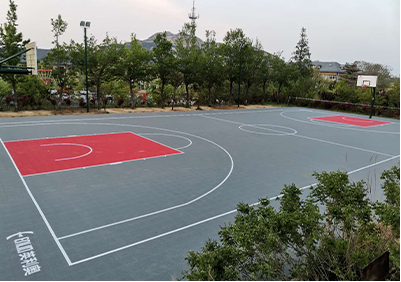Nov . 08, 2024 16:14 Back to list
artificial flooring
Exploring Artificial Flooring Benefits, Types, and Trends
In recent years, artificial flooring has become one of the most popular choices for both residential and commercial spaces. With advancements in technology and innovative designs, artificial flooring solutions provide an array of benefits that enhance aesthetics and functionality. This article will delve into the various types of artificial flooring, their advantages, and the evolving trends in the flooring industry.
Understanding Artificial Flooring
Artificial flooring refers to man-made flooring materials designed to mimic the appearance and texture of natural materials such as wood, stone, or tiles. The primary materials used in artificial flooring include vinyl, laminate, carpet tile, and engineered wood. These alternatives offer consumers the aesthetic appeal of natural products while often being more durable and easier to maintain.
Types of Artificial Flooring
1. Vinyl Flooring Vinyl flooring is a popular choice due to its versatility, affordability, and ease of installation. It comes in various styles, colors, and patterns, allowing homeowners to achieve their desired look. Luxury vinyl tiles (LVT) offer a high-end appearance that closely resembles natural wood or stone. Additionally, vinyl is resistant to moisture, making it an excellent option for kitchens, bathrooms, and basements.
2. Laminate Flooring Laminate flooring is composed of synthetic materials that replicate the look of wood or stone. It consists of a high-density fiberboard (HDF) core, a photographic layer, and a protective overlay. Laminate is known for its durability and scratch resistance, making it suitable for high-traffic areas. Unlike hardwood, laminate does not require refinishing and is available at a fraction of the cost.
3. Carpet Tiles For commercial spaces, carpet tiles are an excellent choice due to their practicality and ease of maintenance. These modular pieces allow for quick installation and easy replacement if damaged. They come in various designs, colors, and textures, enabling businesses to create customized aesthetics. Additionally, carpet tiles provide acoustic benefits and comfort underfoot.
4. Engineered Wood Engineered wood flooring consists of a thin layer of real hardwood on top of a composite backing. This combination allows it to expand and contract with moisture, making it less prone to warping compared to solid wood. Engineered wood offers the warmth and beauty of hardwood while providing increased stability, making it suitable for various climates.
Advantages of Artificial Flooring
artificial flooring

The benefits of artificial flooring are numerous, making it a smart investment for any property owner
- Cost-Effectiveness Artificial flooring options are often more affordable than their natural counterparts, allowing homeowners and businesses to save money without compromising on quality or aesthetics.
- Ease of Installation and Maintenance Many artificial flooring products are designed for quick and easy installation, with some options being DIY-friendly. Moreover, maintenance is typically straightforward—regular sweeping and occasional mopping suffice for most materials.
- Durability Artificial flooring materials are often engineered to withstand heavy use. They are resistant to scratches, stains, and moisture, ensuring longevity in both residential and commercial settings.
- Eco-Friendly Options With an increasing focus on sustainability, many manufacturers now produce eco-friendly artificial flooring made from recycled materials or sustainable resources, offering consumers greener choices.
Current Trends in Artificial Flooring
As design preferences evolve, the trends in artificial flooring also continue to shift. One prevalent trend is the move towards natural aesthetics, where artificial flooring mimics the look of organic materials with realistic textures and patterns. Additionally, the demand for eco-conscious products is driving innovation, with more companies focusing on sustainable practices in their manufacturing processes.
Another trend is the rise of multifunctional spaces, where flooring needs to be versatile enough to transition between different uses. This has led to the creation of hybrid flooring options that combine the best qualities of various materials.
In conclusion, artificial flooring is a practical, cost-effective, and stylish solution for a multitude of applications. Its diverse offerings and continual innovations ensure that there is a suitable option for every space. Whether you are renovating your home or outfitting a commercial establishment, exploring artificial flooring could be the key to achieving your design desires while enhancing durability and value.
-
Wood Sports Flooring Enhanced by GPT-4-Turbo | Top Performance
NewsAug.02,2025
-
Sport Court Tiles with AI Innovation | Durable & Safe
NewsAug.01,2025
-
Vinyl Carpet Flooring | Durable & Waterproof Design
NewsJul.31,2025
-
Premium Basketball Board Stand with GPT-4-Turbo AI
NewsJul.31,2025
-
Premium Maple Flooring for Gyms & Homes | PVC & Vinyl Options
NewsJul.30,2025
-
Premium Outdoor Basketball Court Tiles for All Weather Use
NewsJul.30,2025

